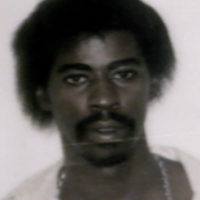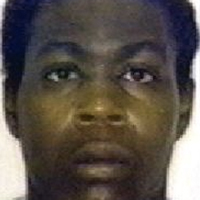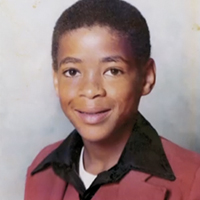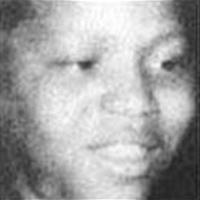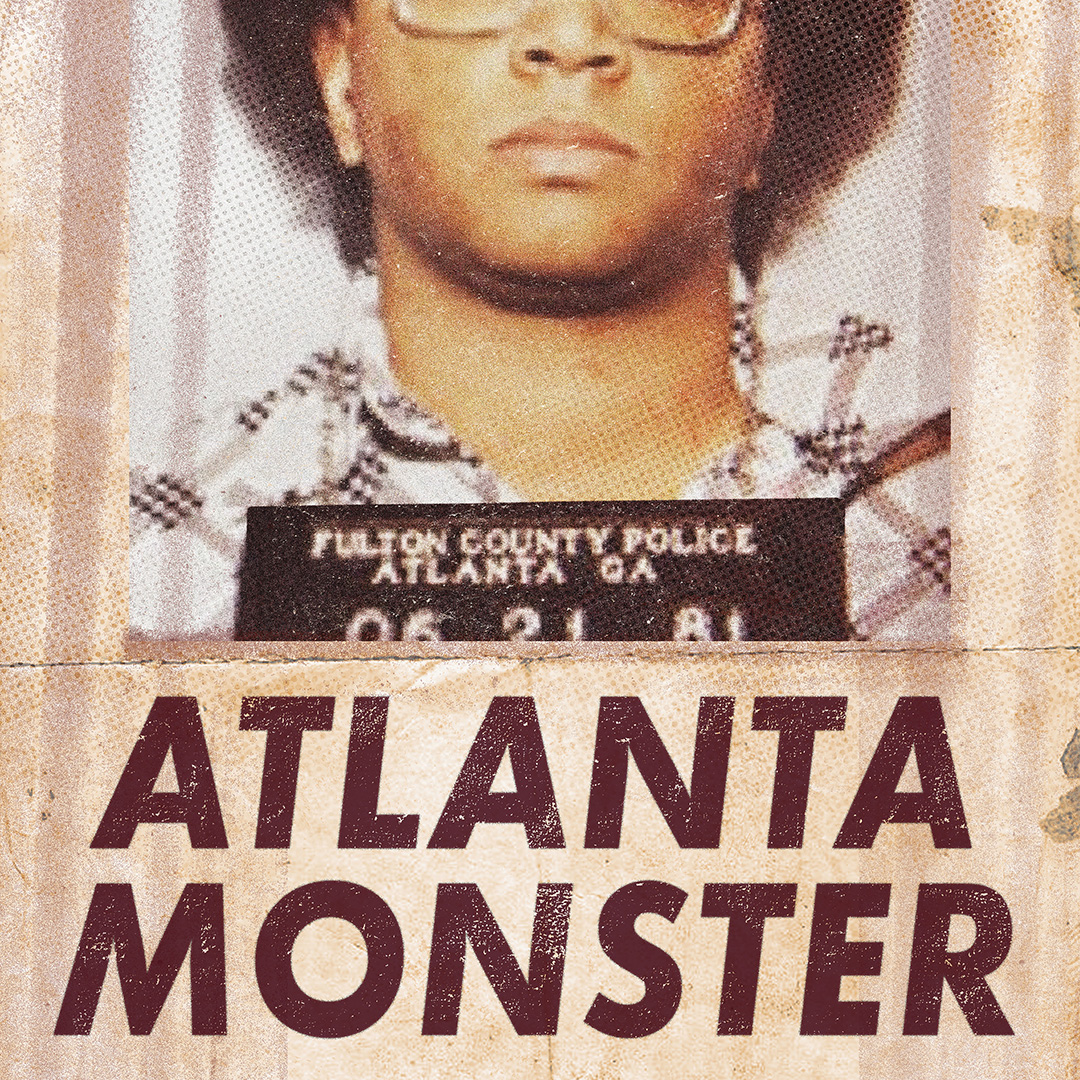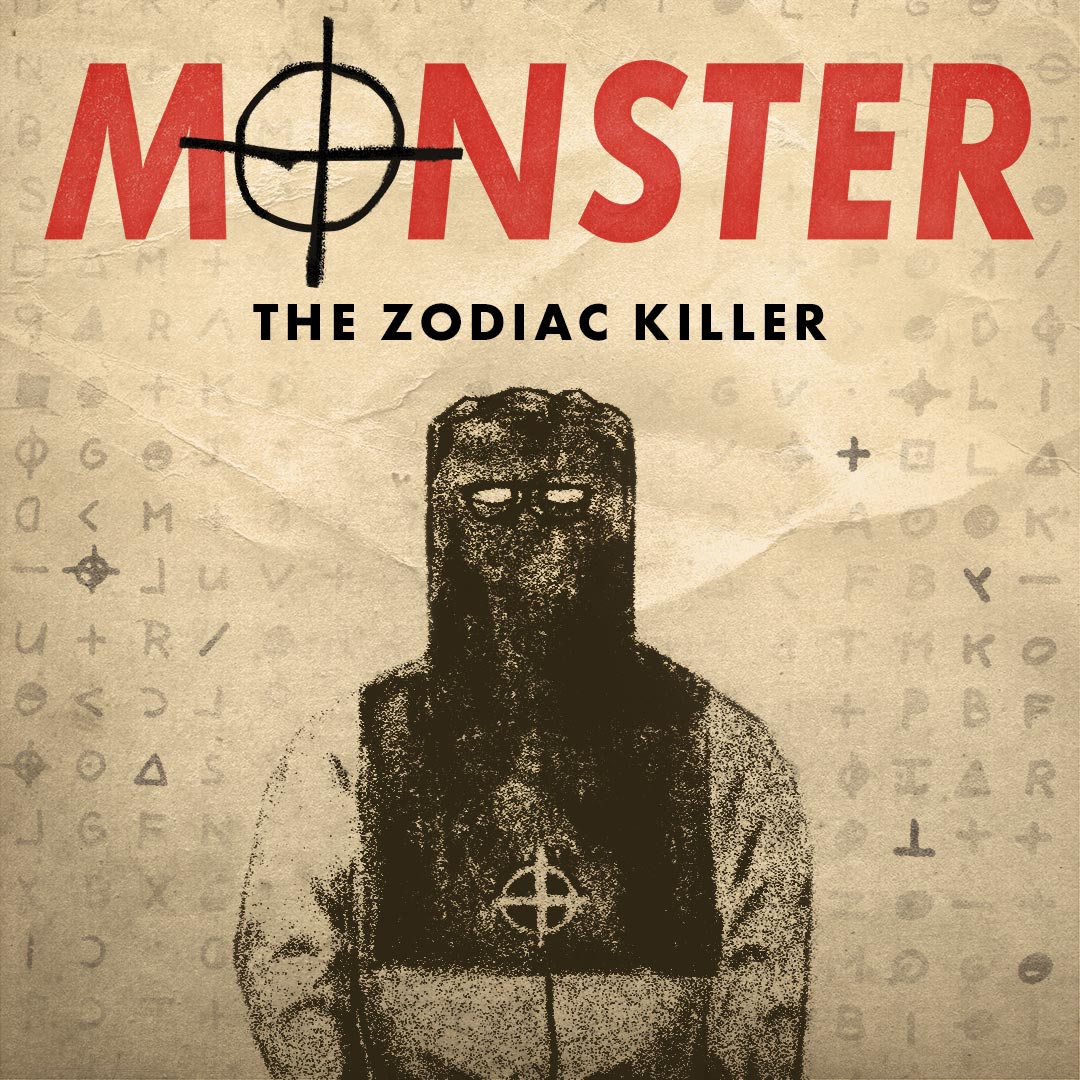Episode 3
Atlanta Monster Seized
Atlanta asks, who is Wayne Williams?
– Richard Radcliff, FBI
I’ve recently been told that if I release this podcast, “bad things” are going to happen to me in the sense of a threat on my life, or my safety, or that of my family.
– Neil Strauss, Journalist/Host
I’ve recently been told that if I release this podcast, “bad things” are going to happen to me in the sense of a threat on my life, or my safety, or that of my family.
– Neil Strauss, Journalist/Host
– Richard Radcliff, FBI
Victims
Nathaniel Cater
Age 28
Last Seen 05/21/1981
Jimmy Ray Payne
Age 21
Last Seen 04/21/1981
Patrick Baltazar
Age 12
Last Seen 02/06/1981
Clifford Jones
Age 12
Last Seen 08/20/1980
Transcript
Mike McComas: I asked did they get his ID and they said yes, he was still sitting in his car. I still had my composite sketch and I pulled it out. He had these little glasses on, and I drew the glasses and I held it up and I said, “Anybody recognize this guy?” And it was Wayne Williams to the T. I mean, it just … It was just Wayne.
Mike McComas: Ironically, we caught Wayne Williams at 2: 55 a.m. on the last day of the surveillance. When we got there, we were immediately briefed that this guy was seen on the bridge and something hit the water. It hadn’t been recovered. Of course, nobody could get in that water because, A, it’s 2: 55 a.m. and the water current was just outrageous. Somebody would have drowned and we wouldn’t have stood a good chance of recovering anything anyway, I don’t think.
Mike McComas: I went up to him and identified myself as a special agent with the FBI, and I asked him immediately if he knew why he was being pulled over. And he said, yes, it’s probably because about those kids that are missing. Which kind of surprised me; that was an unusual answer, I thought.
Payne Lindsey: That was his answer.
Mike McComas: Well, that’s a paraphrase of it; that wasn’t his verbatim answer. But yeah, it was something like that. And the next words out of his mouth was, he says, “You know,” he said “Channel 5 is really covering this very well but Channel 11, I don’t think covers it enough.” So that kind of surprised me. I remember that jumped out at me as well.
Intro: In Atlanta, another body was discovered today, the 23rd.
Intro: At police task force headquarters, there are 27 faces on the wall; 26 murdered, one missing. “We do not know the person or persons that are responsible, therefore we do not have the motive.”
continue reading
Payne Lindsey: From Tenderfoot TV and How Stuff Works in Atlanta-
Intro: Like 11 other recent victims in Atlanta, Rogers apparently was asphyxiated.
Intro: Atlanta is unlikely to catch the killer unless he keeps on killing.
Payne Lindsey: This is “Atlanta Monster.”
Mike McComas: I asked him if I could talk to him in my car. I told him we needed to get out of the traffic because the tractor trailers were rolling by and you couldn’t hear. Plus, I wanted to interview him. I wanted to get him in my car and interview him. He agreed. Real amenable, very friendly guy. I mean, he-
Payne Lindsey: Was he nervous?
Mike McComas: No. No, he wasn’t nervous.
Payne Lindsey: What was your first impression of him?
Mike McComas: Well, I didn’t have one other than me telling you what he just kind of surprised me with the media comment, and acknowledging that it was about the kids. I didn’t really have much of an impression. I was wanting to know more about what his story was, and eventually I got it. He gets in the car with me and the first thing I ask him to do, and he surprised me again, I said, “Can we have consent to search your vehicle?” And he said, “Sure.” So we had a consent form that I had him sign, and he signed it and let us search his vehicle.
Mike McComas: Now as I had walked by his vehicle, I stuck my head in the window and looked around. There was a bag of clothes laying on the floor, and there was a pair of gloves laying on the seat. And what really struck me, though, was that there was a nylon cord kind of like a ski rope. It was about 24 inches long and it was knotted on each end. That rope really interested me.
Mike McComas: So I started interviewing him, and asked him what he was out this late at night, because like I said it was 2: 55 a.m. when he got in my car. He said that he was a talent scout and that he had an 8 o’clock appointment, I think 8 a.m. the next morning, but he was out trying to find their address so that he would know where it is the next morning and not be late. That just didn’t have an air of truthfulness to it. Nobody goes out at 2 o’clock or 3 o’clock in the morning to find an address to make sure they’re not late at 8 o’clock.
Mike McComas: I found out he was an only child. He lived with his parents, his mom and dad. His dad was a freelance photographer and his mother had been a retired teacher. They were quite elderly. He had come along pretty late in life. He was a pretty intelligent guy, too. He had a very high I.Q. Word had it that he had built an AM-FM radio station in his backyard when he was about 14, and the FCC had made him tear it down.
Mike McComas: I asked the guys, I said is the search of his car over, and they said yes. And I said okay. So I said, ” Anybody got any reason for him to say here any longer?” And they said no. So we let him go. There was some things there that happened, that transpired that shouldn’t have happened. The FBI has always been and remains an institution that is very conscious of not falsely arresting people. They’ve made mistakes in the past; everybody does. It’s a judgment call, but we did not that night want to violate any of his civil liberties, his civil rights, and so we erred on the side of caution. It was my decision then to let him go.
Mike McComas: What wasn’t my decision is when I asked them, I said, “Where is these things you found in the car?” And they went, “We didn’t keep any of it.” And I went, “What? You didn’t what?” I said, “What about the gloves and the rope?” Because I’m thinking that that’s probably part of the crimes that had been committed since the people had been killed from ligature strangulation. But somewhere, we dropped the ball. I was in charge, so I went ahead and took the hit for it. I said, “Well, that’s just the decision you guys made and I’ll back you. I don’t agree with it right now, but as far as official word goes, then we made that decision and that’s the way it goes.”
Payne Lindsey: Did anyone even see Wayne toss anything over the bridge?
Mike McComas: No, never did. But there wasn’t another car on that bridge. He was the only car there. They saw the headlights approach; they heard the splash; and then they saw what like I described earlier as him appeared to just be starting out again at two or three miles an hour.
Payne Lindsey: Did you guys ask him that night if he tossed anything over the bridge?
Mike McComas: Yes. And he … I asked him, there had been a splash and I think I asked him have you tossed anything, and I don’t remember if he said he was throwing trash out or something. I can’t remember that part. I don’t remember what his answer was, but he did say … I think he said he was throwing trash away or something; that he had some trash that needed to get rid of and he threw it in the river.
Payne Lindsey: That night, no one ever saw or found what caused the alleged splash that was heard in the water.
Mike McComas: We let him go, and at 6 a.m. we packed up and I went ahead and went home, and home was down south of Atlanta. I lived in Morrow, Georgia. I drove up to East Tennessee because it was Memorial Day weekend, it was a long weekend, to see my mother and basically crashed. I was totally exhausted. I slept for … I think I got there, it’s about a three hour drive and I got there about noon on Friday, went to sleep, woke up at noon on Saturday, ate, and went back to sleep.
Payne Lindsey: Though police had a strange encounter with the man on the bridge, they decided to let him go. They had no reason to hold him in custody. The bridge stakeout operation was now officially over, and Mike McComas went home to rest for the weekend. But meanwhile, investigators were still hard at work, suspicious of the man they stopped on the bridge. And by the time McComas woke up again, big things were happening.
Mike McComas: Sunday morning, I got a call from Bill McGrath. He was one of the administrative supervisors on the case. And Bill called me and he said did you interview Wayne Williams, and I said yes. He said well, do you have any notes? I said oh yeah, I’ve got a lot of notes. “Well, we just found a body about 500 meters downstream. You need to call in and do your report right now,” and he said, “and get yourself back to Atlanta. We think we got him.”
Payne Lindsey: A few days later, a body washed up in the river just a few miles downstream from the bridge.
News Reporter 1: A body was found around 11: 00 this morning in the Chattahoochee River, just south of the I-285 bridge where the river forms the border between Cobb and Fulton Counties. The body was nude, and medical examiners estimated it had been in the water a couple of days. It was found by a fisherman. The body was on the Fulton County side of the river, but it was difficult for police to get to that part of the river. Boats were launched from the Cobb County side. Members of the special taskforce poured in. About two hours later, the body was brought out. A medical examiner said it was a young, black man in his early ’20s.
Payne Lindsey: The body was of 27 year-old Nathaniel Cater. The FBI now had their first real suspect, the man they had stopped on the bridge. That man was Wayne Williams.
News Reporter 2: The man who has been questioned was stopped late at night on May 21st after arousing the curiosity of police on a river stakeout. The investigators heard a splash in the water underneath the Jackson Parkway bridge. No arrest was made then, and no one inspected two bags of clothes, the pair of men’s shoes, or the gloves seen inside the station wagon. For two days, the taskforce quietly dragged the river, not finding anything. Three days later, two people in a canoe did, the nude body of Nathaniel Cater a mile downstream from the South Cobb bridge.
Payne Lindsey: Within a matter of minutes, news stations swarmed the river where Nathaniel Cater’s body was found, and it wasn’t long after that the media discovered the name Wayne Williams. Though no arrest had been made, news stations released his name anyways.
News Reporter 3: To anyone who’s been anywhere even close to the non-suspect’s home, it’s obvious he doesn’t have any privacy anymore. In spite of his pleas to remain anonymous and in spite of the police begging the media to use restraint, most have released his name anyway.
Payne Lindsey: Reporters and camera crews from all around the nation lined up outside the home of Wayne Williams anxiously awaiting for something to happen.
News Reporter 4: A hoard of police, news reporters and photographers smothered this quiet neighborhood. The media didn’t want to miss any arrest that so far hasn’t happened.
Payne Lindsey: And with this man now under the national spotlight, the FBI’s investigation was sent into overdrive.
News Reporter 5: Two FBI agents and two detectives with the Atlanta Police Department sat perched on their cars, guns visible, never taking their eyes off the modest home in northwest Atlanta. The mother, father and son inside became a family under siege in their own home. At around 10 this morning, the man’s father came out of the house, pushed the cameras away with his commanding presence, and silently walked toward the police. Without saying a word, he signaled them to follow him into the house.
News Reporter 6: Have they asked you to leave? A confession?
Payne Lindsey: The nation was glued to their TVs. As reporters to find more information on the man in question for the murder of Atlanta’s children. Everyone wanted to know who was Wayne Williams?
News Reporter 2: Wayne Williams is an Atlantan born and bred, 23 years old, a product of the city’s public school system. He went to Anderson Park elementary school and graduated from Frederick Douglass High School on Hightower Road, northwest. People who know Williams say he is a highly intelligent young man, a good student when he was in school. That opinion is echoed by Williams’ seventh grade teacher, Archie Wilson, who Williams continues to list as a personal reference on his resume.
Payne Lindsey: Those who knew Wayne Williams were completely shocked.
Archie Wilson: As a student, he was extremely bright. A very intelligent young man. Quiet, very respectful, honest student. Very dependable; just an ideal student.
News Reporter 2: Williams’ resume lists a number of clubs and organizations he says he belonged to in high school: National Honor Society, ROTC Rifle Team, but his high school class yearbook does not show him in any of the organization pictures. Williams’ acquaintances say he is one who tends to exaggerate his accomplishments and his contacts. His resume’s list of professional references includes many familiar names in the local media. Most of those references say they knew Williams only briefly and not very well. But it is clear Wayne Williams is a bright and ambitious person. He started a radio station in his parents’ home when he was only 12. In his teens, he spent time hanging around many of the city’s radio stations doing odd jobs mostly as an unpaid volunteer, and talking to the people he met about broadcasting.
Radio Pro: He was a bit old for his age, so to speak. I’m saying that to talk to a kid that age about something that you’re doing as an adult and he’s talking on your level is really amazing. And as I said before, he was a likable type of individual, maybe because of the knowledge of the industry as far as I’m concerned.
News Reporter 2: Several years ago, he was arrested for impersonating a police officer and for using police emergency lights on his car. The charges were reduced and handled in traffic court. In 1977, Williams began offering his photographic services to the Atlanta TV stations. Williams would drive the city streets through the night, listening to police monitors in his car, racing to the scene of accidents, fires, and homicides then peddling film of what had happened to the news departments. But the freelance photography business was never very successful, and most recently Williams says he has acted as a talent scout, helping young people get ahead in the entertainment industry. Williams has always lived with his parents in this house on Penelope Road Northwest, the quiet neighborhood that has suddenly become a constant subject of interest for the police and news media. Neighbors say they never knew the family very well; the typical wave as you go by type of thing.
Neighbor 1: He’d been such a good boy as far as I know. I haven’t seen nothing to make me suspicious of him.
Neighbor 2: If he is really … it surprise me, it really shocks me.
News Reporter 7: Why would you think it would be a shock to you?
Neighbor 2: So close and I got sons. And my sons, one of them used to go over there and work with him in his radio station.
News Reporter 2: Bright, intelligent, not terribly close to a lot of people. A news and police groupie of sorts. That is how Wayne Williams is described by those who know him. And as his neighbors said, there is shock that this quiet and promising kid is now a major suspect in the Atlanta child murders.
Payne Lindsey: He was described repeatedly as someone who was intelligent and docile; the last person you would suspect in a murder. But the FBI was convinced otherwise. They continued their investigation and searched Wayne Williams’ house.
News Reporter 8: On Wednesday night, June 3rd, Action News learned that FBI agents and a representative of the special task force had executed a search warrant and had collected potential evidence from Williams’ home and car.
Mike McComas: They found an eight by ten sheet of paper that basically was a flyer that said if you’re between the ages of six and 10, and you think you can sing or dance, I am a talent scout.
Payne Lindsey: Wayne Williams called himself a talent scout, and he had passed out flyers throughout the city in search of young kids to form a music group. I recently found a copy of that flyer, the same one the FBI had found in his home. The flyer reads in bold letters, “Can you sing or play an instrument? If you are between 11 and 21, male or female, and would like to become a professional entertainer, all interviews private and free. No experience necessary.”
Payne Lindsey: The FBI found this very interesting. The flyer suggests that Wayne was put in contact with young kids, probably more than one.
Mike McComas: So he put himself out there as a talent scout and that’s how we surmised that he was getting the kids into the car. Because when you’re having that many kids and getting that much worldwide publicity, you would think somebody would have enough brains to not get in the car with somebody. But he was pretty good at what he did.
Payne Lindsey: It could be a huge coincidence; a line of work with the best intentions. Or it was the perfect way to get children alone. Investigators were now more certain than ever that they had found their man, and it was time they spoke to Wayne Williams again. So they brought him in for questioning.
Mike McComas: They went out and picked him up and brought him into the FBI office; take him the back and there was a massive scene of city dignitaries and state, and everybody in the world wanted to get involved in it. They brought him and he agreed to take a polygraph test, and we talked for a minute and we went downstairs and I did the testing downstairs in my office.
Payne Lindsey: Just you two?
Mike McComas: Just the two of us. The full taskforce and everybody was on the 10th floor; press and news all around the entire building; and we were kind of on the 9th floor, just the two of us.
Payne Lindsey: This is Richard Radcliff, former special agent with the FBI. He sat down alone in a room with Wayne Williams to conduct a polygraph test.
Mike McComas: We had this very interesting interview for about two hours. I said, “You’re very intelligent.” I said, “What’s your I.Q?” And he said, ” I don’t believe in I.Q.s” The polygraph … You have to have confidence in it and I think he was totally confident he could beat it. He said that. He was just totally confident he could beat it.
Mike McComas: And what you do, you ask a series of comparative questions; it’s a series of about 10 questions. Some of them are very simple. It’s everything we’ve discussed, all yes or no answers. It’s not really confusing; it’s really clear, pretty simple, and no surprises. And at that time, I ran what’s considered to be the most valid format in polygraph research, and that was the Zone Comparison Test. I’d form a set of questions, my 10 questions. I’ll go through that and record the physiology, and then I’ll ask if there’s any problem with anything, or anything he need to explain or correct or know. Then you run it a second time. You ask the same set of questions and record a second chart. You run the same set of questions a third time, and after the third time then you score each one of those and compare the responses to the other responses, and then you add those scores up and it will show either deception or no deception.
Mike McComas: And it’s human nature to want to believe people, so I assume he’s going to pass the test. He stayed pretty much composed the whole time. He was composed and it’s not really fair to say relaxed because the whole situation’s not one where you’re relaxed. He was very engaged and he was very much cooperative, and he participated willingly.
Mike McComas: We had this very interesting conversation, and then about what happened, why he was on the bridge. And one pf the things that made him suspect was every time he was asked about the bridge, he gave a different story, so he had already given two or three different versions by the time I talked to him about where he was going and what he was doing. Didn’t stop on the bridge; did stop on the bridge; threw some boxes in the river; didn’t throw anything in the river. So I mean, he had variations of his story.
Mike McComas: He’s a talent scout and he had this girl’s name, Cheryl or whatever her name was, and he was supposed to meet her the next morning at 7 a.m., and so he went to see if he could find the apartment. And I said, “Are you interviewing young girls at 7: 00 in the morning in their apartments? Didn’t that kind of put you in kind of an awkward position?” I said, “I wouldn’t do that.” He said, “I’m not homosexual.” He just made a point, I’m not homosexual. He argued that he wasn’t homosexual. I was asking about being alone with this girl in her apartment at 7: 00 in the morning, and I was asking him why would he do that, why he would set up an interview at 7: 00 in the morning in the girl’s apartment?
Payne Lindsey: This kind of would make him heterosexual.
Mike McComas: Make him heterosexual. Right. And that’s why I was asking him. But his argument was that he wasn’t homosexual. People, I guess, were suspicious of him being homosexual. I said, “Well, I’m not accusing you of being homosexual.” But we had that discussion, so I said, “Do you have a girlfriend?” He said, “Not right now.” So I said, “Well, have you ever had a girlfriend?” He couldn’t name one.
Payne Lindsey: After a long conversation, Radcliff asked the big question that had brought him there the first place.
Mike McComas: Did you cause the death of Nathaniel Cater? Did you throw Cater’s body into the Chattahoochee River that night?
Payne Lindsey: What’d he say?
Mike McComas: He said no; he just denied it. I don’t know Nathaniel Cater; I didn’t have any contact with Nathaniel Cater; didn’t know him, had never been on him, didn’t have a body, didn’t throw anything in the river.
Payne Lindsey: Wayne Williams denied any involvement in the murder of Nathaniel Cater, claiming that he never even knew him. But the results of the polygraph told a different story.
Mike McComas: The test thought he was deceptive, and that’s the first indication in two years on who did it. Wow. So you’re the guy we’re looking for? That’s kind of how I reacted when I got through and graded it all out. When I got through and said, “This shows deception. I’ll be darned, you’re the guy that we’ve been looking for. You’re the one killing these kids.” He said, “That’s not me. Let me see that.”
Mike McComas: So then he spread out the charts. Well, the charts, you wouldn’t know from what I just saw, but you could look at that and tell me that somebody’s lying or they killed a kid. So he spread the charts, looked at all the tracings. So he points out, he says, “What’s that question right there?” I said, “That’s pretty good. ‘Did you cause the death of Nathaniel Cater?'” So he picked out that question, which is where his reaction was. Then I make my call; I go out and tell the whole world that he’s deceptive and it indicates that he’s the one that killed Nathaniel Cater.
Payne Lindsey: Though Wayne appeared to show deception in his polygraph test, investigators let him go and no arrest was made.
News Reporter 9: After 12 hours of interrogation, Public Safety Commissioner, Lee Brown, told waiting reporters that the man had been released and no arrest made.
Lee Brown: In terms of our efforts tonight, we have not ended up with the information that would result in an arrest.
Payne Lindsey: A late night press conference was held outside the building, fielding questions from reporters. But as it turned out, this was a distraction.
News Reporter 9: What the reporters on hand did not know was that Brown was creating a diversion for the man and his father to leave the building.
Payne Lindsey: Soon after, the media rushed to Wayne Williams’ home in hopes of a statement from the man. And what happened next shocked everyone. Wayne invited all the reporters into his living room and held his own press conference for the nation to see.
News Reporter 9: At 7: 00 a.m., three and a half hours after returning home, the young man conducted a news conference, setting the condition that he would not be shown and that his name not be used. You will hear him, but you will see reporters and photographers. He contended that he was being harassed prior to his detainment, intimidated during his custody, and pressured to confess to crimes he says he did not commit.
Wayne Williams: They openly said “You killed Nathaniel Cater and you know it and you lying to us.” They said that. And they said it on a number of occasions. They said it on that night. One of the taskforce captains on the scene pointed his finger at me and said it, and said he was tired of all the BS about working the long hours, working the stakeouts, and that he was ready to pull the thing to an end.
Wayne Williams: They put a tail on me starting last week. I made them probably in the first hour or two. And in the process of tailing me, a couple of the guys weren’t very good drivers and I caused them to have a minor accident, and I think they were just pissed.
Payne Lindsey: After claiming his innocence and expressing frustration with law enforcement, he began to elaborate on his role as a talent scout, detailing his involvement in music groups.
Wayne Williams: It’s our job to take some entertainers basically from the street, polish them up, get them professional, and try and shop a record deal for them. And we had a young group that we had been putting together since 1977, a group called Gemini. And what we’re trying to do is just capture the marketplace basically the Jackson 5 had.
Payne Lindsey: He mentioned recruiting kids to form music groups, naming one in particular that he was currently working on that he called Gemini.
News Reporter 9: Williams, himself, did not exactly go into hiding. He did on several occasions call local reporters. He led police surveillance on some wild goose chases, passing by Commissioner Brown’s and Mayor Jackson’s houses.
Payne Lindsey: Was this the man who was killing Atlanta’s children, or just a local talent scout who was simply at the wrong place at the wrong time? The FBI had gone through countless leads over the past two years, but in their eyes the one that made the most sense was Wayne Williams.
Mike McComas: When you work a case that long with that many people, there’s going to be a lot of theories, a lot of names, a lot of people that you have to check and wash out. I mean, it’s quite an ordeal. So there were a lot of theories out there, but none of them had the substance of Wayne Williams.
Payne Lindsey: What they had on Williams was almost entirely circumstantial.
Mike McComas: I’m not sure that we had a gigantic case when it comes to physical evidence, but we had an overwhelming wave of circumstantial evidence.
Payne Lindsey: Except for one key piece of physical evidence.
News Reporter 10: They do have numerous fibers from the man’s house that match those found on several victims.
Payne Lindsey: The fibers.
News Reporter 10: The fibers are of different colors and texture. Some think that’s good enough. Others, including prosecutors, disagree.
Payne Lindsey: But even the fibers they found weren’t convincing enough for the District Attorney to press charges.
News Reporter 11: Public Safety Commissioner Brown, FBI head John Glover, and taskforce head Morris Redding met with District Attorney Lewis Slaton for an hour this morning. Slaton’s office took out the search warrants to search the house of the man police questioned, and Slaton decided last night there was not enough evidence to charge the man.
Payne Lindsey: So he didn’t press charges.
News Reporter 10: No charges filed. You might have missed that fact if you read the New York Post. Its headline this morning was sensational.
Payne Lindsey: But the New York Post had already run their morning paper with a very conflicting headline that read “Atlanta Monster Seized.”
News Reporter 10: But investigators here are worried about sensationalism only to the extent it affects their investigation.
Monica Kaufman: He was a freelance photographer for WSB-TV, so that was the shocker for our newsroom.
Payne Lindsey: As the media dove deeper into Wayne Williams’ background, his story became even more interesting. In addition to being a talent scout, he had also worked as a freelance photographer for the local news station in Atlanta, WSB-TV. Monica Pearson, who worked at WSB-TV and was also anchor at that time, recalls this very well.
Monica Kaufman: I was just an anchor, but I can tell you from our viewpoint it was, “What?” You know, this is somebody we all worked with, who was photographer but a freelance photographer, not on staff. And I did not know him because he worked mainly on weekends. But other people did and it was kind of a matter of “Not Wayne. He is so mild mannered. What do you mean? He couldn’t hurt a fly.” But then there were others who said, “Well, maybe.”
Payne Lindsey: In the weeks following the bridge incident, America was gripped by the ups and downs of the FBI’s investigation into Wayne Williams. But on June 21st, 1981, everything would change.
News Reporter 10: Suddenly, late in the afternoon authorities arrested Williams.
D.A.: As you know, we meet on this on a day-to-day basis. As a result of the meetings we’ve had, today the decision was made to issue the arrest warrant, which was done, and he was taken into custody as a result of that.
News Reporter 10: Williams was taken to the Fulton County Jail. He was booked on a charge of murder, the murder of 28 year-old Nathaniel Cater.
Payne Lindsey: Despite his initial hesitation, the District Attorney suddenly changed his mind and Wayne Williams was charged with the murder of Nathaniel Cater.
News Reporter 11: An indictment for the Cater murder was almost predictable. But the surprise came when District Attorney Lewis Slaton made the announcement.
Lewis Slaton: The Grand Jury had returned an indictment in two counts charging Wayne Bertram Williams with the murder of Jimmy Ray Payne in one count, and Nathaniel Cater in the second count.
Payne Lindsey: Wayne was also charged with a second murder. On April 27th, 1981, the body of 21 year-old Jimmy Ray Payne was also found in the Chattahoochee River. The cause of death was asphyxiation.
News Reporter 11: That announcement came as a very big surprise late this afternoon. Not only did the attorneys for Wayne Williams think any indictment wouldn’t come until next Tuesday, they never thought their client would be indicted for the murder of 21 year-old Jimmy Ray Payne.
Monica Kaufman: The police have arrested and charged him, but he still has to be judged by his peers and in a court of law. So until he is found guilty, we have to say “alleged.” There was still the question is he guilty or his he not?
News Reporter 11: In a brief statement, Williams stood in front of Judge Clarence Cooper and said, “I plead not guilty to both counts.”
Payne Lindsey: The trial was underway and Wayne Williams’ defense attorney, Mary Welcome, was ready to fight back.
Mary Welcome: There has been a serious effort on the part of the government, the law enforcement agencies, the various agencies to convince the country, even the world that Wayne is implicated in all of the murders. So on reflection, I shouldn’t be too surprised that they would try to tie at least one more in.
Payne Lindsey: She implied that law enforcement was ganging up against Wayne in an effort to close the case, and felt very strongly about her client’s innocence.
News Reporter 11: From the beginning, many people thought the state’s case against Wayne Williams was as suspect as the suspect himself. Prosecutors had no eyewitness to the crimes, no confession. But on December 28th of last year, the state went ahead with its case; its main ingredients, fibers and animal hairs that allegedly matched.
Payne Lindsey: Larry Peterson of the Georgia state crime lab began analyzing fibers found on the bodies of victims. The fibers collected were dog hairs, and green, violet, yellow and red material fibers. In particular, some of the green fibers reportedly came from unique carpeting that was found inside Wayne Williams’ family home.
Mike McComas: We came up with three types of fiber. Some of it was microscopically found. The green fiber I have personal knowledge of because my partner and I tracked that down. They used to have an old green carpet; it was a shag carpet. Did you guys ever see any of that old shag? Yeah, it’s quite old, very dated. And it was a green color. And when Harold Deadman told us, when finished with his, he took a microscopic fiber and found out that this was manufactured in South Carolina, and it was transported by West Point Pepperell to Dalton, Georgia. At Dalton, there was 200,000 square yards of it and it went to 10 or 12 different distributors in Atlanta. And then we came down from Dalton and we contacted those 10 or 12, and we found the paperwork where Wayne Williams’ parents had purchased that carpet 15 years before. So we traced a microscopic fiber from its very beginning all the way to Wayne’s house, and it was the same fiber that we were pulling off of the bodies. Now that, my friend, is a piece of investigation, okay?
Payne Lindsey: The second major part of the prosecution’s case was the bridge incident, but the prosecution had no eyewitnesses.
News Reporter 11: The bridge incident was the closest investigators could put their suspect to a dead body, a legal necessity called corpus delicti. Although prosecutors had most of the pieces that night in May, a splash, an alleged slow-moving car, a body downstream just two days later, it still lacked the essential part of the puzzle: someone actually seeing Williams’ car stopped on the bridge or, better yet, the suspect throwing a body from the structure.
Payne Lindsey: No one who actually saw what allegedly happened on the bridge that night.
Payne Lindsey: The defense argued in the courtroom that Wayne Williams was 5’7″ and Nathaniel Cater was 6’1″, claiming that it was impossible for a man of Wayne’s size to pick up his body and throw it over a bridge. I asked Mike McComas about this.
Mike McComas: Wayne wasn’t a great big guy, but he was round and he was pudgy. I don’t know if you’ve ever had real rush of adrenaline. People do amazing things when they’ve got a rush of adrenaline. And when you’re not trying to be careful and hurt somebody, you can drag them and pick them up, it’s no problem.
Payne Lindsey: Another point, the prosecution argued, was the sound that a car would make when driving across the bridge.
D.A.: What was interesting, there was an expansion plate on the bridge. And if a car goes over the …the term…and if a car goes over the bridge faster than five miles an hour the expansion plate will go clunk, make a loud clank. Under five miles an hour, there’s no sound.
News Reporter 12: That sound, the defense claims, is the key to their proof. Police recruit, Bob Campbell, part of the stakeout team says Williams’ car did not make that sound, indicating the vehicle was traveling at a slow rate of speed. But a sound expert hired by the defense says that’s impossible; that even at four miles an hour, the family station wagon makes the joint rattle loud enough for someone underneath the bridge to hear it. Suggestion? That recruit Campbell was fast asleep on the job the night Williams was stopped. And the prosecution surprisingly went along with the theory, asking Mark Oviatt if a loud splash would wake the recruit up. The expert said yes. The state contends that loud splash was the body of Nathaniel Cater hitting the water.
News Reporter 13: Williams bluntly stated the police version of the now-famous bridge incident was wrong, a lie. He claimed he wasn’t driving slow, that the he didn’t turn around in a parking lot next to the bridge. That he did not throw anything into the river. He tried to persuade the jury that he really was out near a bridge, looking for a Cheryl Johnson, who still remains a mystery to this trial.
Payne Lindsey: According to Wayne Williams, the night he was stopped on the bridge, he was going to find a young woman named Cheryl Johnson, who wanted to do an audition for him. Earlier that day, Cheryl Johnson had called his home, and Wayne’s mother answered and wrote down her name, phone number and address. According to Wayne, that night, he was going to verify her home address, so he would know where to go for the morning appointment. But the major problem was, investigators never found a Cheryl Johnson. When they went to the address on the piece of paper, there was no Cheryl Johnson who lived there, and the phone number didn’t work. So, who was Cheryl Johnson, and where was she? The prosecution claimed that she wasn’t real, but Wayne stuck by his story.
News Reporter 13: The state implied he fabricated the story, but Williams didn’t budge from it, claiming the woman simply gave him a wrong number and wrong address.
Payne Lindsey: After a grueling two month trial, it was time for a verdict.
News Reporter 13: After several days of testimony, three experts summed it up in two sentences. Fiber and hair from Williams’ home and car matched fibers and hair taken from the bodies of Cater and Payne. They also painted him as a possible homosexual, who hated poor young blacks. The defense, steered by a Mississippi lawyer fought back, better than many had predicted. Their goal: place doubt in these people’s minds, as Binder said throughout the trial, Wayne Williams is not a killer.
News Reporter 13: He countered with former police recruits who charged members of the stakeout team that night in May were drinking, and asleep. A loose fitting fiber expert from Kansas came in and showed that fibers may not be unique as the state had claimed.
Payne Lindsey: For 12 hours, the jury deliberated. And on February 27, 1982, the jury returned their verdict.
Payne Lindsey: Guilty.
News Reporter 13: When the verdicts were read, Williams’ father stood before the court and said, “I feel this is very unjust. I don’t see how anyone could find my son guilty of anything. I just don’t see it.” Williams’ mother called the judge an “Uncle Tom.” The 23 year old freelance photographer this morning only a suspect, was optimistic. Tonight, as he left the courthouse, his mood had changed. He is now painted as the mass murderer.
Payne Lindsey: Wayne Williams was found guilty for the murder of Nathaniel Cater and Jimmy Ray Payne. But in addition, the FBI essentially closed all other cases of Atlanta’s murdered children, attributing them to Wayne Williams.
News Reporter 13: The question of race popped up a lot tonight. Mrs. Williams remarks about “Uncle Tom”; Binder even said a white man would have been treated differently; and the mother of victim Yusef Bell, a woman who prodded police into forming the taskforce several years ago, was very disappointed with the outcome.
Payne Lindsey: Camille Bell, mother to victim Yusef Bell, acted as a voice for the parents of the missing and murdered children. She wasn’t very happy with the verdict.
Camille Bell: If I believe that Wayne Williams killed the other 12 that they claimed, the same fibers that were found on those bodies were also found on Yusef’s body. That I must believe that Wayne Williams killed my son. But, since I don’t believe that Wayne Williams killed anybody, I can’t believe that Wayne Williams, therefore, killed my son. What it all boils down to is now we have Wayne Williams, 23, the 30th victim of the Atlanta slayings.
Jasper Cameron: A lot of people think he’s innocent, believe it or not. I mean I think they view him as someone who got caught up in it, and end up getting blamed for it.
Eric Cameron: I’m gonna be honest with you. You know, I never spent a lot of time paying attention. I was happy when they was like, “All right, we off Code Red now. Everybody can go out and play again.”
Payne Lindsey: So, is Wayne Williams the Atlanta Child Murderer?
Mike McComas: Absolutely. Without a shadow of a doubt, Wayne Williams was the Child Murderer. I’m not saying he did all of them. He was convicted on two because we didn’t have enough evidence to take him on the rest of them. We had attributed the lion’s share to him. I mean he, he definitely did more than just two, but that was the only two that we had enough to take him to court and convict him of. I didn’t have any problem with the way it was concluded. You know, it’s like if you catch a guy with 100 bank robberies, he’s not gonna get anymore … I mean, you know what? You can only sentence a guy so many times to so much. So, two life sentences is the same as 10 life sentences. Life is life.
Monica Pearson: It really wasn’t over. It really wasn’t over. Today it’s not over. Wayne Williams says he didn’t do it. The family’s don’t believe he did it. Law enforcement says he did it. The court said he did the adults. But no one has ever convicted him on killing the children, the boys who were found suffocated. I still think it’s a story that needs to be investigated. I would love, and I’m glad you’re doing this to open up the case again, and see what you can find all these years later.
Payne Lindsey: Remember Russell Baltazar? Whose brother Patrick was found brutally murdered? I asked him about this.
Russell Baltazar: I think he got taken as a scapegoat to shut down the problems we had. I don’t believe he was tried with all evidence, and said, “You are guilty for killing all of those kids.” I think it was a way for them to slow it down. Somebody better find somebody to put in the jailhouse, so make a lot of these people start being quiet.
Judge: We, the jury, find the defendant, Wayne Bertram Williams, guilty on count number one.
News Reporter 14: The arrest of Wayne Williams appeared to solve one of the biggest multiple murder mysteries in American history. The closing of the cases effectively branded Wayne Williams “The Atlanta Child Murderer”.
Payne Lindsey: On nearly every list of American serial killers, you’ll find the name Wayne Williams.
News Reporter 15: Wayne Williams remains in jail, and may well be there for the rest of his life.
Payne Lindsey: In 1985, they made a movie about it, starring Morgan Freeman.
Morgan Freeman: Was this the man who choked the life out of, shot, bludgeoned, and drowned 28 human beings?
Judge: The courts hereby sentences the defendant, Wayne Bertram Williams, to the custody of the State Board of Corrections, where he is to serve two life sentences.
Payne Lindsey: And over the next three decades, it continued to make its way into pop culture, especially in the hip-hop community, being so closely linked to Atlanta.
Payne Lindsey: Andre 3000 from Outkast even has a verse on Travis Scott’s 2016 album.
Payne Lindsey: But a lot of people think he didn’t do it. Russell Baltazar doesn’t, and he has his own story to back that up. Russell heard about a strange incident involving his brother Patrick, and it made him doubt that Wayne Williams was the killer.
Russell Baltazar: Spoke to several people out there, and one of the police officer … the story was told to me that they had him on tape, that he was running, him and two kids from individuals, and more than one person. And, they ran into a phone booth. He picks up the phone and dials, I guess 911, and calls the police department. And they supposedly had it on recording that he said that someone was chasing him.
Payne Lindsey: Did he describe the person?
Russell Baltazar: He said it was two white people that was chasing him. And that’s all I’ve ever heard about that story. I did try to call the police department and talk to someone about that tape. And all of a sudden, no one know what I was talking about. So, pretty much just left that alone, up until now, you mention it to me. I’m telling you the story about it. I think most of us, like myself, if I knew in my heart that they proved that he killed those kids, then that would be a lot of relief for us. But I don’t think they did.
Payne Lindsey: I realize Russell Baltazar was probably not the person related to a victim that doesn’t believe it was Wayne Williams. I started scouring the internet for other stories like this. And one day I found a YouTube video from 2015, under the username ” InjustUs”. It’s a video of a guy named Emmanuel, brother of Clifford Jones, one of the victims.
YouTube Host: Okay, and your brother’s name was?
Emmanuel Jones: Clifford Jones.
Emmanuel Jones: Basically, it was one early morning, August 20, 1980. My brother and I basically walked up to a grocery store for my grandmother. People had kidnapped my brother, man named Jamie Brooks, Horace Hobgood, Freddy Cosby … these guys held my brother captive in a laundromat right on the corner of Ottawa Road. They raped him and beat him all day long. And, one of the people stood in the doorway watching my brother get raped, crying, screaming, saying he wanted to go home, and saying that he was going to tell his grandmother. And said that the dude, Jamie Brooks, put a rope around his neck, and pulled on the rope. And later the man told the police this, and the police had all this information. And they still … they still blamed someone else for Clifford’s murder. And, knowing Wayne Williams didn’t kill Clifford.
Payne Lindsey: So, who made this? Who is “InJustUs”? Who is the man behind the camera? Whoever it was, they had been doing their own research on this case decades later. Someone I definitely wanted to talk to. After a little digging, I found him. The man who made the video was a guy named Dewayne Hendrix. I tracked him down, and I gave him a call. And within the first 30 seconds, it was already getting interesting.
Dewayne Hendrix: With that said, you know, it’s gonna be how deep do you wanna go? To get to the bottom of this will literally change American history. I mean, it would do so many things. When we just get into this, then you get into all the layers of it, the corruption you deal with, the coverup, the actual murders themselves, who was responsible for a lot of this. There are people in high places that want this shit to come out. And then there are some people that want it to come out, but they’re afraid of how it’s gonna come out. And then there’s some people that don’t want it to come out at all because there’s gonna be some mother fuckers that gonna have to lay on the sword.
Dewayne Hendrix: It depends on how deep you wanna go because this rabbit hole is very, very, very deep.
Payne Lindsey: Dewayne Hendrix told me that he wanted to meet in person, but he lived in Texas, and I was in Atlanta. So the next weekend, I hopped on a flight.
Payne Lindsey: I wanted to hear his whole story. He was so invested. So personally involved.
Dewayne Hendrix: It popped up in the news. I just knew it wasn’t right, and I remember saying out loud, “They lying on that man. When I grow up, I’m gonna help him get out of jail.” Those are my exact words. And my grandmother goes, “If you don’t sit your little narrow ass down, them racist ass white boys will kill you.” And I told her, I said, “Well, they have to kill me then because that man didn’t do it.” That’s one of the memories from my childhood that was just always etched in my psyche. This case. It was just something so wrong. It resonated in my soul that there’s something wrong about this.
Payne Lindsey: Dewayne remembers seeing the arrest of Wayne Williams in the news as a child, and it was something that stuck with him.
Dewayne Hendrix: We were real close. She had me when she was getting ready to go for her freshman year in college. We basically grew up together. We had this bond, and it was almost like if anything was ever wrong with my mom, she didn’t even have to say something. I could just look at her and I knew. And she’s a tough woman, so to see her crying uncontrollably to the point to where, you know, it’s like snot all over the place. It was real tough. My mom was crying like every day, nonstop, for like four days in a row. And she basically didn’t wanna tell us. And my pop, he pulled me to the side, and he sat me down and he said, “You know son. This was about to happen. I’m gonna have to turn myself in.”
Payne Lindsey: Dewayne told me that he was all too familiar with injustice from a very young age. He talked about his stepdad’s wrongful conviction, which happened during a pivotal point in his childhood.
Dewayne Hendrix: It was very difficult because those years of your life, you’re basically becoming a young man. I ended up becoming like so many things in life based on the example that he set. This was my first respectable man that I was around all the time, and I could ask for advice and talk to and he would teach me stuff like, “Son, this is what a man does.” That type of thing.
Payne Lindsey: Yeah.
Dewayne Hendrix: It was tough, man. It was real tough because you go from just trying to figure out your body and the changes you’re going through as a young man and everything else, and you have all that wound up in your head. And now, you gotta figure out how you gonna lie to your homeboys about where’s your step pops? It really psychologically it does something to you, and makes you very angry.
Dewayne Hendrix: For me, it made me hate any authoritative figure. At that particular time in my life I didn’t realize it but I would just disrespect teachers in class, you know. I would just go in class and I would just go to sleep in class because I just really, psychologically, didn’t understand what I was going through. But, it made me very rebellious.
Payne Lindsey: All this together inspired Dewayne to research Wayne Williams’ story. I asked him about the YouTube video of one of the victim’s brothers, Clifford Jones.
Dewayne Hendrix: When we initially spoke with one another, I cried. In the meeting we were having, I had to walk out of the meeting a couple times. His brother was inside being beaten and raped all day before they actually killed him and disposed of his body. He said he knew that Wayne Williams didn’t kill his brother. He knew that. It made me even more wanna try to do everything in my power.
Payne Lindsey: After talking to Clifford’s brother, Dewayne reached out to more families. And was slowly piecing together a documentary, with one goal in mind.
Dewayne Hendrix: The actual goal was to make sure that we put together a piece that was actually going to highlight everything that needed to be highlighted to give the public the facts that they would need to know to make an informed decision as to whether or not they believed Wayne Williams is the Atlanta Child Murderer. That was the whole goal. Whether or not Wayne was a murderer at all. He was never formally charged or indicted for killing any children. So, again, that’s another big misconception, right? That comes with the cases that you know, he’s been dubbed the Atlanta Child Murderer.
Payne Lindsey: Dewayne had one main point that I really couldn’t argue with.
Dewayne Hendrix: He was only charged with the murder of Nathaniel Cater and Jimmy Ray Payne. These are anomalies because these is two adults. This thing is like something that is always been talked about. And it won’t go away until something is done about it. It will always be the elephant in the room in the City of Atlanta.
Payne Lindsey: A few months into making his documentary, he got a random phone call late one night in the studio.
Dewayne Hendrix: I’m in the recording studio, and I’m recording a song, and my phone rings. It’s Wayne Williams. And everybody in the studio, everyone was stuck.
Payne Lindsey: From that point forward, what transpired? What did Wayne say? What was developing after that?
Dewayne Hendrix: Welcome to the real world, Neo.
Payne Lindsey: Next time on Atlanta Monster:
Payne Lindsey: So, you know Wayne Williams?
Dewayne Hendrix: Absolutely.
Payne Lindsey: Describe Wayne to me. What’s he like?
Dewayne Hendrix: Brilliant asshole. Very intelligent asshole. That’s the best way I can put it, and I don’t mean it in a bad way because I’m an asshole at times.
Payne Lindsey: This thing is huge. It’s huge. And believe me, it is more hands in this shit than meets the eye. And you wouldn’t believe it.
Informant: That was in the, that the media giving you any way. They wouldn’t use his name. They gave him this name: Atlanta Monster.
Payne Lindsey: Atlanta Monster is an investigative podcast told week by week, with new episodes every Friday. A joint production between How Stuff Works and Tenderfoot TV. Original music is by Makeup and Vanity Set. Audio archives courtesy of WSB News Film and Videotape Collection. Brown media archives, University of Georgia archives. For the latest updates, please visit AtlantaMonster.com, or follow us on social media.
Payne Lindsey: Do you keep your hands on this the whole time?
Mike McComas: You stay like that.
Payne Lindsey: And where are you at? Are you behind me?
Mike McComas: I’m right here. I’m not going anywhere. You know what that does?
Payne Lindsey: No.
Mike McComas: It brings out muscle movements. We didn’t have that back then.
Payne Lindsey: Oh.
Mike McComas: So now you wanna squeeze your tail and put it back in its sheer.
Payne Lindsey: Oh wow. It’s pretty stiff. It’s actually not that bad.
Mike McComas: No.
More Episodes
Episode 4
Gemini
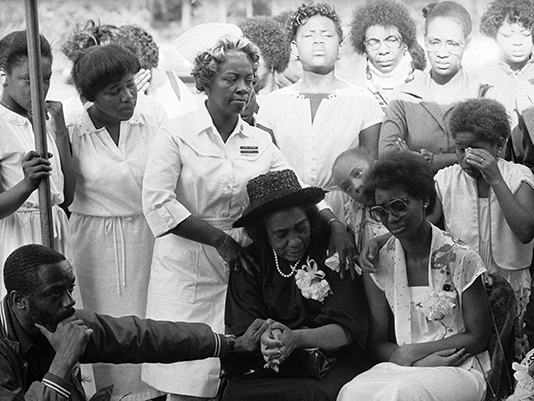
Wayne Williams through the eyes of those seemingly closest to him…
Episode 5
Wayne’s World
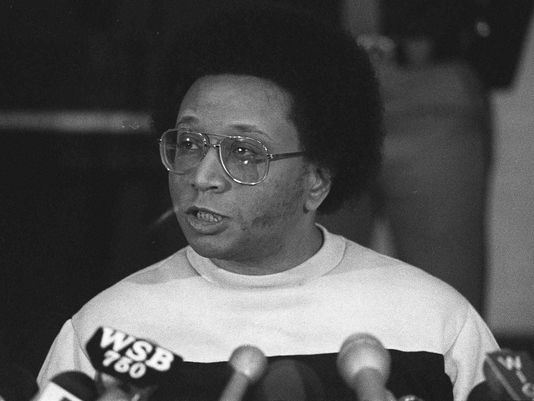
Payne makes contact with the alleged Atlanta Monster.
Episode 6
The Splash

Payne and the team gear up for a closer look at the so-called “bridge incident.”

